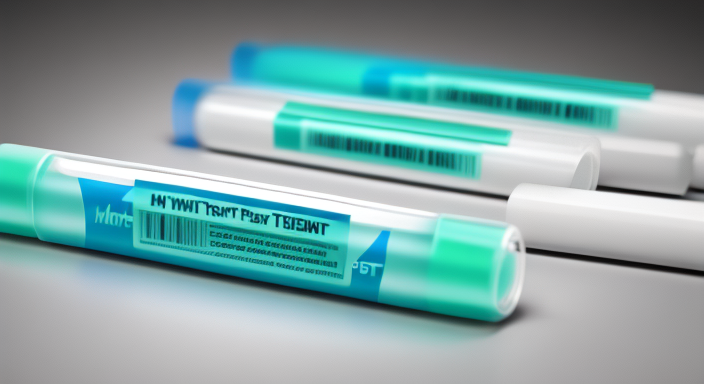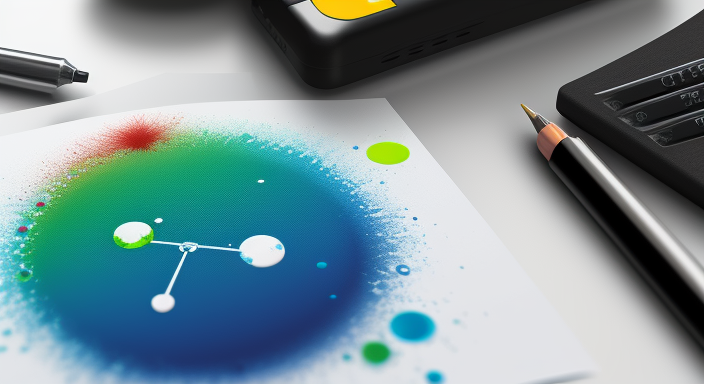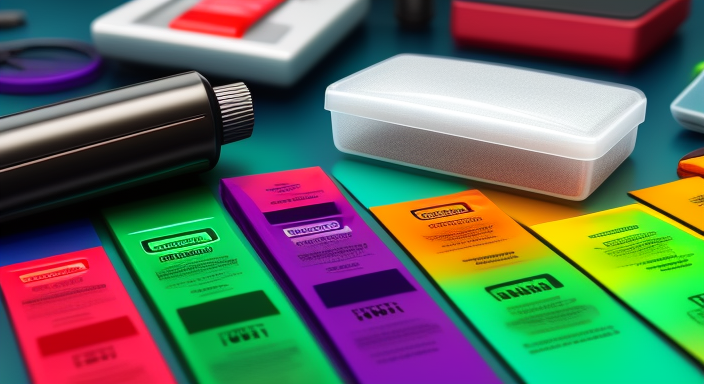The phrase Drug Testing can have two meanings. On the one hand, it is possible to test people – in the hospital, at work, and at home under certain conditions. Most often, this type of testing is necessary in order to obtain objective data on whether a person has used a particular substance or not. Sometimes it can be useful, for example, in court proceedings, or research. Sometimes it can be a tool of substandard control and manipulation. On the other hand, you can test the substances themselves. We will talk about this type of testing today – about Drug Testing Kits.
Drug Identification Tests

Drug identification tests, also known as drug testing kits or reagent tests, are tools used in Harm Reduction strategies to help individuals identify substances and assess their potential risks. These tests are particularly valuable for people who use recreational drugs or suspect that they may have been exposed to illicit substances. By providing quick and accessible information, drug identification tests empower users to make informed decisions about their health and safety.
Drug identification tests involve the use of specific reagents that react with various compounds found in drugs. These reagents are typically chemicals that change color or produce specific reactions when they come into contact with certain substances.
Commonly used reagents include Marquis, Mecke, Mandelin, Simon’s, and Froehde reagents, among others. Each reagent is designed to detect specific classes of drugs or their metabolites, such as opioids, amphetamines, benzodiazepines, hallucinogens, and synthetic cathinones.
Benefits of Reagent Tests
- Substance identification: Drug tests can help users identify the presence of specific drugs or adulterants in their samples, providing valuable information about the substances they have obtained.
- Harm Reduction itself: By knowing what substances are present, individuals can make informed decisions regarding their drug use, dosage, and potential risks.
- Safety: Identifying substances can help users avoid potentially harmful or mislabeled drugs, reducing the risk of unintended adverse effects or overdose.
- Education and awareness: Drug identification tests contribute to raising awareness about the variability and potential dangers of illicit drugs, promoting informed decision-making and safer drug use practices.
- Confidentiality: These tests can be performed discreetly, ensuring privacy for individuals seeking to understand the composition of their substances.
Limitations of Testing Kits
- Limited scope: Drug identification tests can only detect specific classes of drugs or common adulterants. They may not detect all possible substances present in a sample, especially new or less common compounds.
- False positives/negatives: Reagent tests rely on chemical reactions, and variations in the composition or impurities in a sample can affect the test results, leading to false positives or negatives.
- Interpretation expertise: Correctly interpreting test results requires knowledge and experience. Without proper training or understanding, there is a risk of misinterpreting or misusing the results.
- Legal considerations: In some jurisdictions, the possession or use of drug identification tests may be subject to legal restrictions or could be considered evidence of drug-related activities. Users should be aware of local laws and regulations.
Now let’s take a closer look at specific substances, reagents, and testing procedures.
MDMA Testing Kits

MDMA tests are specifically designed to detect the presence of MDMA (3,4-methylenedioxymethamphetamine) or its analogs in substances. Here’s how MDMA tests work:
- Reagent tests: MDMA identification tests typically employ reagent-based chemical reactions. Reagents are specific chemicals that react with certain substances, producing color changes or characteristic patterns that help identify the presence of MDMA or related compounds.
- Reagent selection: Various reagents can be used to test for MDMA, including Marquis, Mecke, and Mandelin reagents. Each reagent has different color reactions and is specific to different substances. For MDMA, the Marquis reagent is commonly used.
- Test procedure: To perform an MDMA identification test, a small sample of the substance in question is placed on a testing tray or surface. A few drops of the selected reagent are then added to the sample, and the reaction is observed.
- Color changes: The reagent will cause a chemical reaction with MDMA, resulting in a characteristic color change. For example, the Marquis reagent typically turns purple or black when it comes into contact with MDMA. The reaction time and intensity of the color change can provide additional information about the composition and purity of the sample.
- Interpretation: The color change observed during the reaction is compared to a color chart or reference provided with the test kit. The chart indicates the expected color reactions for different substances, allowing users to identify the presence of MDMA or distinguish it from other substances.
Cocaine Testing Kits

Cocaine identification tests are designed to detect the presence of cocaine or its related compounds in substances. Here’s how cocaine harm reduction identification tests work:
- Reagent tests: Cocaine identification tests utilize specific reagents that react with the chemical components of cocaine, producing characteristic color changes or patterns. The reactions are based on the chemical properties of cocaine and its derivatives.
- Reagent selection: Several reagents are used to test for cocaine, including Marquis, Mecke, and Scott’s reagents. Each reagent has different color reactions and is specific to various substances. For cocaine, the most commonly used reagent is Scott’s test.
- Test procedure: To perform a cocaine identification test, a small sample of the substance in question is usually placed on a testing tray or surface. A few drops of the selected reagent are then added to the sample, and the reaction is observed.
- Color changes: The reagent will cause a chemical reaction with cocaine, leading to a characteristic color change. For example, Scott’s reagent typically produces a blue color when it comes into contact with cocaine. The reaction time and intensity of the color change can provide additional information about the composition and purity of the sample.
- Interpretation: The observed color change during the reaction is compared to a color chart or reference provided with the test kit. The chart indicates the expected color reactions for different substances, enabling users to identify the presence of cocaine or differentiate it from other substances.
LSD Testing Kits

LSD identification tests are used to detect the presence of LSD (lysergic acid diethylamide) or its analogs in substances. Here’s how LSD harm reduction identification tests work:
- Reagent tests: LSD identification tests rely on specific reagents that react with the chemical components of LSD, causing characteristic color changes or patterns. The reactions are based on the chemical properties of LSD and its derivatives.
- Reagent selection: Various reagents can be used to test for LSD, including Ehrlich’s reagent, Hofmann reagent, or Froehde reagent. Each reagent has different color reactions and is specific to different substances. Ehrlich’s reagent is the most commonly used reagent for testing LSD.
- Test procedure: To perform an LSD identification test, a small sample of the substance in question is typically placed on a testing tray or surface. A few drops of the selected reagent, such as Ehrlich’s reagent, are then added to the sample, and the reaction is observed.
- Color changes: The reagent will cause a chemical reaction with LSD, resulting in a characteristic color change. For example, Ehrlich’s reagent produces a purple color when it comes into contact with LSD. The reaction time and intensity of the color change can provide additional information about the presence and purity of the sample.
- Interpretation: The observed color change during the reaction is compared to a color chart or reference provided with the test kit. The chart indicates the expected color reactions for different substances, allowing users to identify the presence of LSD or differentiate it from other compounds.
Cannabis Testing Kits

Cannabis harm reduction identification tests are used to detect the presence of cannabinoids, such as THC (delta-9-tetrahydrocannabinol), in cannabis products. Here’s how cannabis harm reduction identification tests work:
- Reagent tests: Cannabis identification tests employ specific reagents that react with cannabinoids, producing color changes or other observable reactions. These tests are based on the chemical properties of cannabinoids and their interactions with the selected reagents.
- Reagent selection: Various reagents can be used to test for cannabinoids, including those that target THC specifically or detect a broader range of cannabinoids. Some common reagents include the Duquenois-Levine reagent, the Marquis reagent, and the Fast Blue B reagent.
- Test procedure: To perform a cannabis identification test, a small sample of the cannabis material is usually taken and placed on a testing tray or surface. A few drops of the selected reagent are added to the sample, and the reaction is observed.
- Color changes or reactions: The reagent will cause a chemical reaction with cannabinoids, resulting in characteristic color changes or other observable reactions. For example, the Duquenois-Levine reagent can produce a purple color in the presence of THC.
- Interpretation: The observed color changes or reactions are compared to a color chart or reference provided with the test kit. The chart indicates the expected reactions for different substances, allowing users to identify the presence of cannabinoids or differentiate them from other compounds.
Fentanyl Test Strips

These test strips are specialized tools designed to detect the presence of fentanyl, a potent synthetic opioid, in substances such as drugs or powders. Fentanyl test strips work on the principle of immunoassay, similar to drug test kits. I will focus on this substance in more detail.
Fentanyl, even in small amounts, can be highly potent and increase the risk of overdose. By testing powder substances (opioids, cocaine, or others) for fentanyl, individuals can gain awareness and make informed decisions regarding their drug use, helping to reduce the risk of accidental overdose.
How to use fentanyl test strips
Using fentanyl test strips properly is crucial to obtain accurate results. Here is a step-by-step guide on how to use fentanyl test strips:
- Gather the necessary materials:
- Fentanyl test strips: Obtain fentanyl test strips from a reliable source or harm reduction organization.
- A substance to be tested: This can include a powdered drug, such as heroin or cocaine, that you want to check for the presence of fentanyl.
- Buffer solution: Some test strip kits come with a buffer solution or suggest using a specific type of solution to mix with the substance.
- Prepare the testing area:
- Find a clean, well-lit area to conduct the test.
- Ensure that you have a clean surface or tray to place the test strip on.
- Follow the manufacturer’s instructions:
- Carefully read and understand the instructions provided by the manufacturer of the fentanyl test strips. Different brands may have specific instructions that need to be followed.
- Pay attention to recommended volumes, mixing ratios, and timing.
- Prepare the sample:
- Use a clean utensil, such as a spoon or scoop, to obtain a small portion of the substance you wish to test.
- Place the substance in a clean container or on a clean surface.
- Mix the substance with the buffer solution:
- If the fentanyl test strip kit includes a buffer solution, follow the instructions to mix the substance and the buffer solution together.
- Some test strips may require a specific amount of solution to be added to the substance. Ensure you follow the recommended ratio.
- Dip the test strip:
- Take the fentanyl test strip and carefully dip it into the solution containing the substance.
- Ensure that the test strip is fully immersed in the solution.
- Wait for the reaction:
- Allow the test strip to remain in the solution for the specified duration mentioned in the instructions (e.g., usually a few minutes).
- Avoid touching or moving the test strip during this waiting period.
- Interpret the results:
- After the recommended waiting time, carefully remove the test strip from the solution.
- Observe the test strip for any visible changes or indicators according to the instructions provided.
- The appearance of specific lines, colors, or other indicators on the test strip will help determine the presence or absence of fentanyl.
- Dispose of the materials:
- Safely dispose of used fentanyl test strips and any remaining testing materials following local guidelines for the disposal of hazardous waste or biohazard materials.
- Remember, accurate interpretation of the test results is important. If you have any doubts or questions about the results or the proper use of fentanyl test strips, seek guidance from harm reduction organizations, healthcare professionals, or reliable sources familiar with their use.
Lower your risk of overdose
Illicit drug supplies can sometimes be contaminated with substances like fentanyl, a potent synthetic opioid. Fentanyl is significantly more potent than many other drugs and increases the risk of overdose. Drug test kits can help individuals detect the presence of potentially dangerous substances, such as fentanyl, in their drugs. By identifying contaminated substances, individuals can make informed decisions about their drug use and take necessary precautions to reduce the risk of overdose.
The issue of overdose and other complications concerns, of course, not only fentanyl. Unfortunately, street substances are often supplemented not just with neutral fillers, but with active agents that enhance the action of the main substance. So, relatively safe MDMA being in the tablet form of ecstasy can be supplemented with caffeine, amphetamine, other stimulants and psychedelics. Given that the dosage content of substances in ecstasy tablets often exceeds the adequacy values, this creates additional risks for people.
General Recommendations for Drug Testing

- Obtain reliable test kits: Use drug identification test kits from reputable sources or organizations that provide accurate and quality-tested reagents.
- Follow instructions: Carefully read and follow the instructions provided with the test kit. This includes handling precautions, sample preparation, and interpreting the results.
- Cross-check information: While drug identification tests can provide valuable insights, they should not be considered definitive proof of a substance’s identity or purity. Whenever possible, consider cross-referencing results with other reliable sources or confirmatory tests.
- Seek professional guidance: If you have concerns about your drug use or suspect a severe substance-related issue, reach out to healthcare professionals, addiction specialists, or local harm reduction services for guidance, support, and access to additional resources.
- Practice overall Harm Reduction: Remember that drug identification tests are just one tool in a comprehensive harm reduction strategy. It’s essential to prioritize overall safety by understanding safe drug use practices, managing dosage, avoiding polydrug use, and considering alternative harm reduction measures, such as naloxone availability and safer injection equipment. For more details, check out my article Harm Reduction Philosophy.
- Stay informed: Stay updated on emerging trends and new substances in the illicit drug market. Harm reduction organizations, online forums, and reputable drug information websites can provide valuable insights into current drug compositions and risks associated with specific substances.
- Proper disposal: Safely dispose of unused or unidentified substances. Contact your local waste management authorities or harm reduction organizations for guidance on how to dispose of drugs safely, ensuring they do not pose risks to others or the environment.
- Encourage open dialogue: Foster open and non-judgmental conversations about drug use and harm reduction among peers, friends, and within communities. Encouraging discussions can help disseminate accurate information, reduce stigma, and promote safer practices.
- Accessibility and affordability: Advocate for the availability of drug identification tests and harm reduction resources in your community. Push for affordable and accessible testing kits, outreach programs, and support services to ensure that individuals have access to the tools and information they need to make safer choices.
- Continuous learning: Keep educating yourself about harm reduction, drug-related risks, and the available resources. Stay up-to-date with evolving scientific research, harm reduction guidelines, and community initiatives to enhance your knowledge and understanding. More information about Drug Testing you can find, for example on Reddit or Youtube.
Remember, while drug identification tests can be valuable tools, they are not a foolproof method for ensuring safety. It’s crucial to combine them with other Harm Reduction strategies, such as using trusted sources for obtaining substances, starting with small doses, and having a sober friend present. Ultimately, the goal is to minimize the risks associated with drug use and promote the overall health and well-being of individuals who choose to engage in substance use.
Summary

If you put all this together and try to deduce one thought, it may sound like this – substance testing kits are a great way to be sure of what you are using. Clear and objective results can not only help reduce anxiety and have a good time, but also really save someone’s life by identifying a dangerous substance or the absence of a declared manufacturer or seller.
I see a future where testing substances with reagents will become an ordinary tradition, will be simplified, and will be perceived by people as an integral part of the process. However, this is not a utopia, just the opposite. It would be a good grimace at a bad game.
Testing of substances at such a comprehensive level is necessary for society only if there is a black market of substances where there is no adequate regulation and quality control. And while this consequence of the War on Drugs is still with us, we must do everything possible for our health and the health of our loved ones for the most part ourselves.
Find More
For details, you can contact our friends from Barcelona Kykeon Analytics. They know everything about chemical analysis and testing.




